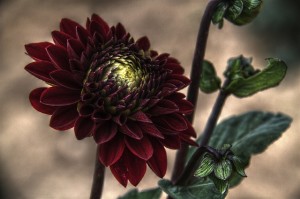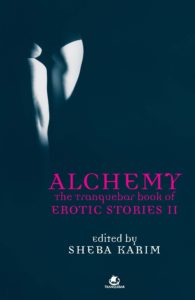 “Just the sex. Lose the poetry,” demanded an anonymous erotica collector in the 1940s to novelists Anais Nin and Henry Miller after promising them $1 a page for their stories. The same refrain echoes today, as consumers set their sights on poorly-scripted “mommy porn” titles — most recently, the infamous “50 Shades of Grey.”
“Just the sex. Lose the poetry,” demanded an anonymous erotica collector in the 1940s to novelists Anais Nin and Henry Miller after promising them $1 a page for their stories. The same refrain echoes today, as consumers set their sights on poorly-scripted “mommy porn” titles — most recently, the infamous “50 Shades of Grey.”
Sex. Great sex is what the people should be reading. But how does one find good erotica? (Answer: Start by reading some Anais Nin.) An even more perplexing question for authors is how to write good sex? How does one take an intimate act — arguably the single most intimate act a human being can engage in — and arrange its infinite variables onto the page in such a way that titillates the readers?
Sheba Karim, editor of and contributor to “Alchemy: The Tranquebar Book of Erotic Stories II” which was released last fall, bluntly told The Hindu in a recent interview, “It’s difficult to write sex well.” Indeed. And yet the 13-story volume once again takes on the challenge of offering its readers a scintillating mix of erotic short stories — no small feat.
The first Tranquebar erotic anthology, 2009’s “Electric Feather,” was the first-ever erotic anthology featuring solely South Asian authors. “Alchemy,” it’s sequel, features a new crop of writers, including The Aerogram contributors Amitava Kumar and Abeer Hoque.
Perhaps to understand the finesse required of good erotica, one can start by visiting its beginnings, with a re-read of one of the classics, 1748’s “Fanny Hill: Memoirs of a Woman of Pleasure.” In Fanny Hill, author John Cleland deftly managed to create a timeless piece of erotica — all without a single obscenity. And after brushing up on the classics, aspiring authors can utilize these handy rules from The Rumpus’s Steve Almond. His suggestions include, “never, ever use the words “penis” or “vagina,” “resist the temptation to use genital euphemisms,” “real people don’t talk in porn clichés,” et. al.
 Then again, weren’t rules made to be broken?
Then again, weren’t rules made to be broken?
For example, in the first story in the collection, Rabi Thapa’s “The Farmer’s Daughter,” “breasts” are “breasts”,” “penises” are “penises” and “nipples” are “like strawberries.” Clinicalism aside, the protagonist toys with the allure of inter-caste passion, at one point asking himself (and presumably the reader) “how do poor people have sex?” Sadly, Thapa’s main character, a wealthy aristocrat, obsesses more about the potential of sex than the actual act. Tease.
Unfortunately for the reader, Thapa’s character’s single-minded quest for self-discovery as opposed to an orgasm remains a running theme throughout “Alchemy.” For instance, in “Clay” by Gudiya, the author is also obsessed with hooking up with someone from another caste, in this case the gardener. (The female protagonist there describes him as “carved from a slab of pure chocolate.”) Other stories, like “Sanskrit” by Ranbir Sidhu, and “Abandon” by Shrimoyee Nandini prefer to leave sex in the background altogether.
Luckily for lovers of true erotica, M. Svairini offers “Mouth,” a hedonistic science-fiction piece that plunges adroitly into the pleasures of the body and never looks back. Other notable erotica pieces include a coming-of-age story, “Matinee,” by Mohan Sikka, as well as Hansa Sowvendra Shekhar’s touching story of two male lovers in “Semen, Saliva, Sweat, Blood.” And don’t expect to read Mary Anne Mohanraj’s “The Marrying Kind” with a steady pulse rate.
Undoubtedly, the allure of erotica is the fantasy aspect. In erotica, race, caste, gender, identity take a second seat to the all-consuming quest for Eros. Sadly, many of the characters in these stories seem to think otherwise. If you’re looking for traditional better-cover-the-book-in-brown-paper-before-I-take-it-on-the-subway erotica, by all means Google yourself into happy oblivion. But if you want a delightful short story collection that takes on love, sex and romance — “Alchemy” is the book for you.












